Probably one big worry that you have when starting your life as an adult is how you will pay for everything. As a child, your parents made sure that there was money for everything you needed. They took care of providing the home, meals to eat, and clothing when you needed it. You may not have had everything you wanted all of the time, but you had everything you needed, at least most of the time.
Now that you’re looking at being out on your own, or maybe you’re already out and wondering how you’ll provide for yourself, you may be thinking that there is just too much. You worry that you won’t have the money you need to cover your rent, or meals for the month, or pay for gas to get to work. The answer is to develop a budget, which will allow you to verify that your needs are covered and let you know what extra money you have, if there is any, to spend on some of the extra things you want. In this article, we’ll discuss how you develop a basic budget and how you use it to plan your spending and saving.
In this series of articles under the category of “The Basics of Money Management,” we’ll go through some of the basic things you need to know to be a fully functioning, financially fit adult in the modern world.
(Note, if you click on a link in this post and buy something from Amazon (even if you buy something different from where the link takes you), The Small Investor will receive a small commission from your purchase. This costs you nothing extra and is the way that we at The Small Investor are repaid for our hard work, bringing you this great content. It is a win-win for both of us since it keeps great advice coming to you (for free) and helps put food on the table for us. If you don’t want to buy something from Amazon or buy a book, how about at least telling your friends and family about our website as a great place to learn about investing and personal finance. Thanks!)
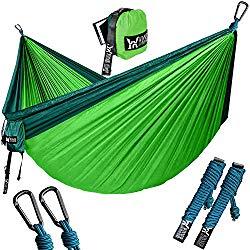
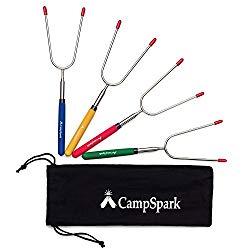
Shop for camping and hiking supplies
How to make a budget
Making a budget is really fairly simple. Just take out a sheet of paper, or fire up your laptop and open a spreadsheet, and start listing all of your sources of income at the top. For most people, this would start with a job, but for some, it may be a stipend that your parents provide while you’re at college or income from a bond portfolio. Put everything here, including money from odd jobs, interest from savings accounts, and any other income sources that you have. Total the amount you receive each month. This is your monthly income.
Next, start listing your monthly expenses below your income, starting with critical things like shelter, food, insurance, and transportation. Don’t forget about insurance. Next list things that you are forced to pay for like car payments and loan payments. Finally, add things that you want to buy like music, vacations, movie tickets, etc… and make a monthly budget item for these. Add everything together and total these at the bottom.
If your expenses are less then your income, you’re probably in good shape. Go back and check your list again to make sure you didn’t leave anything off. If your numbers still look good and you have included everything and you still have a positive balance, you have a viable budget that covers everything you need. Since every dollar needs to go somewhere, add an entry called “savings” and put the extra money there.
Making your budget balance
If things do not balance out and your expenses exceed your income, you have some work to do. First, take a look at your luxuries. Are there things you could cut out entirely here? In some cases, you can substitute less expensive or free items for more expensive items. Jog or bike instead of keeping a gym membership. Have nights in with friends instead of hitting the clubs. Do camping instead of expensive vacations at hotels. Drive instead of fly.
If you’re still in the red, start going through the things you need to buy, but which don’t have a fixed cost, like food. Can you choose less expensive options like cooking at home more or buying in bulk and cut your food budget? Could you get a roommate and cut your rent? Could you bike or take the bus, or move close to work and the stores, and cut your transportation budget? Could you make your clothes last longer and cut your clothing budget?
Finally, look at the things you’re forced to pay, like car and credit card payments, and see if you can pay off the debt and get rid of that payment entirely. You should always be looking to get rid of these types of expenses, or never take them on in the first place, since they don’t give you any flexibility. In the future, try to just pay cash for things once rather than get a payment schedule or a subscription. And never, ever get a timeshare.
If you really want to turbocharge your budget, check out some of the suggestions in FIREd by Fifty: How to Create the Cash Flow You Need to Retire Early . There the different budget categories are broken down and ways to save in each category are discussed.

Making your budget work for you
Just making a budget isn’t enough. To really get the benefit, you need to put your budget to work. The rule is that you get to put anything you want into your budget when you’re making it, as long as it all balances. But once you’re done, your budget is in charge. No spending more on a category than you put in your budget.
Many people use a cash system to help them stick to their budget. They may withdraw cash at the start of the month or each week and put it in envelopes, one for each major category. To learn more about an envelope system, check out The Total Money Makeover by Dave Ramsey, king of getting out-of-debt. You might also look into using a budgeting app which keeps track of how much you’re spending in each category. However you choose to do it, make sure you follow what is in your budget.
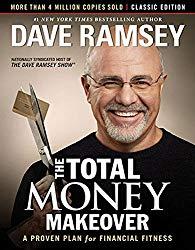
Now, sometimes something will come up that you forgot about or which you didn’t know about when you made your budget. If this happens, go back to the budget and figure out where the money is coming from. Everything must still balance. If it is truly an emergency, you can draw from the emergency fund as well, but it should go in the budget. Also, be sure to direct your savings towards replenishing your emergency fund, perhaps cutting back on your luxury budget until you do so.
Where those savings should be going
If you’ve found some savings, the first thing to do is to build up an emergency fund. This is about $1000-$3000 in a savings account or money market to pay for things when little emergencies happen. Once you start living larger and have bigger expenses and more things to maintain, this should build up to about $10,000.
If you have money beyond that, you should start investing it. To start to learn how to invest, check out the SmallIvy Book of Investing: Book 1: Investing to Become Wealthy or The Bogleheads’ Guide to Investing. Both are excellent references, the first on individual stock investing and the second on using index mutual funds.
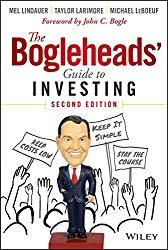

Don’t forget the future you
While you’re putting down all of your monthly expenses, also think beyond the current month and far into the future and at things like retirement and medical costs in old age. You need to save up a lot of money for these things (millions of dollars). This may seem impossible now, but it is really pretty easy if you start early. Just put away about 10-15% of your income towards retirement starting in your 20’s and you’ll be way ahead fo the curve.
This assumes that you won’t do something silly like cash out your retirement accounts in your thirties or forties. If you do, you’ll need to start all over again and it gets a lot harder each time you restart because you have less time left. If you budget correctly, however, and use some of the extra money you have left over to build up investments outside of your retirement accounts, you should never need to touch this money. The future you will be very thankful.
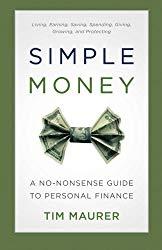

Shop Personal Finance and Business Books
Have a burning investing question you’d like answered? Please send to [email protected] or leave in a comment.
Follow on Twitter to get news about new articles. @SmallIvy_SI
Disclaimer: This blog is not meant to give financial planning or tax advice. It gives general information on investment strategy, picking stocks, and generally managing money to build wealth. It is not a solicitation to buy or sell stocks or any security. Financial planning advice should be sought from a certified financial planner, which the author is not. Tax advice should be sought from a CPA. All investments involve risk and the reader as urged to consider risks carefully and seek the advice of experts if needed before investing.
